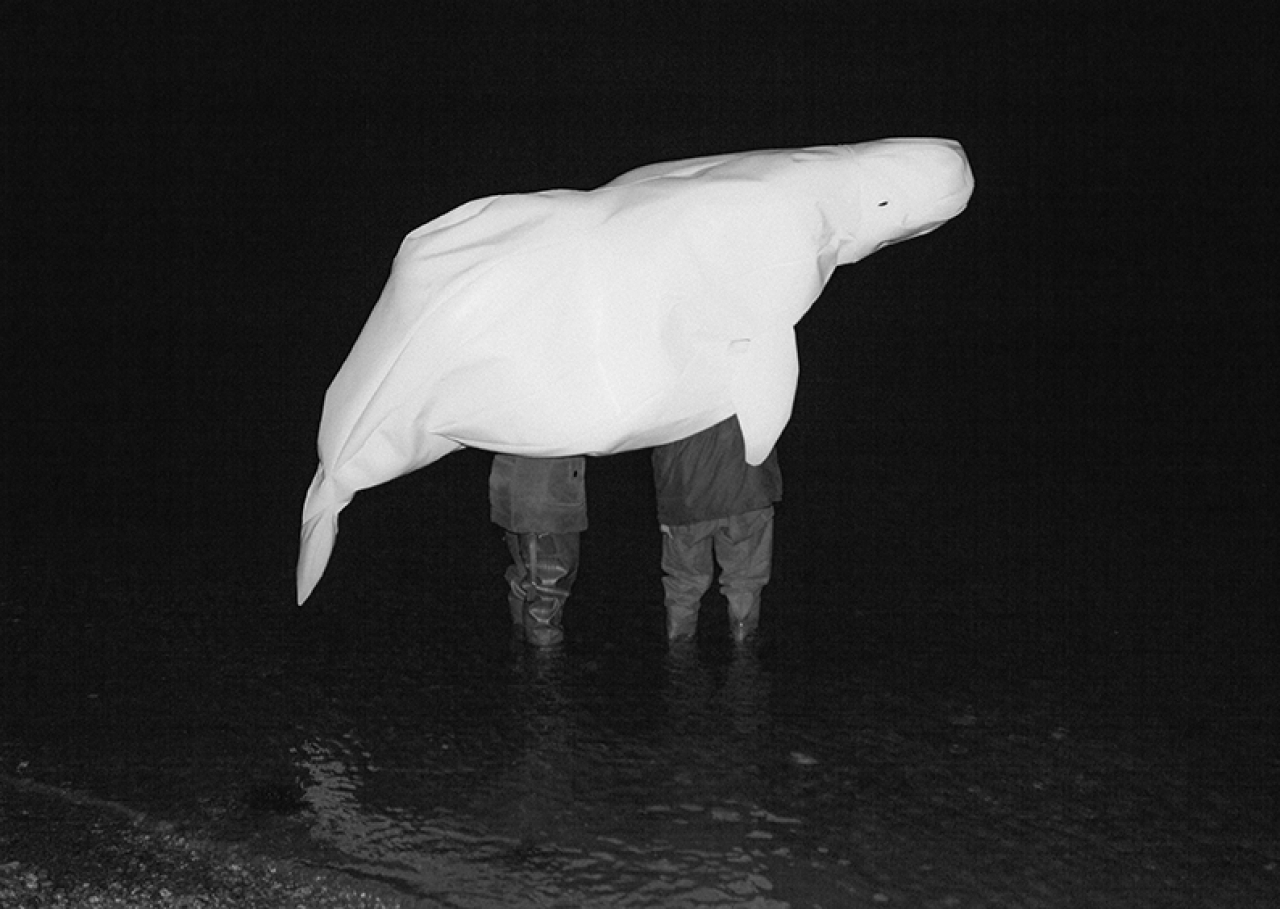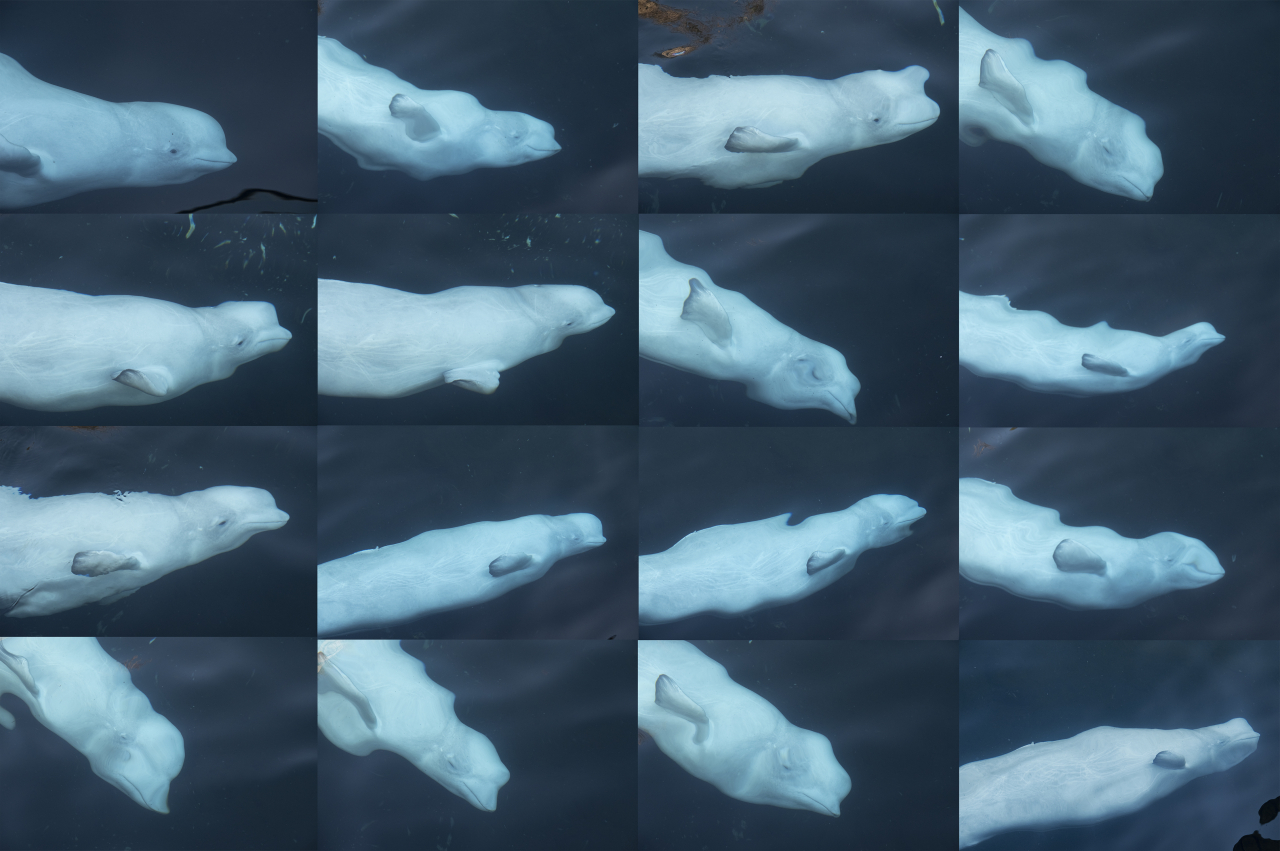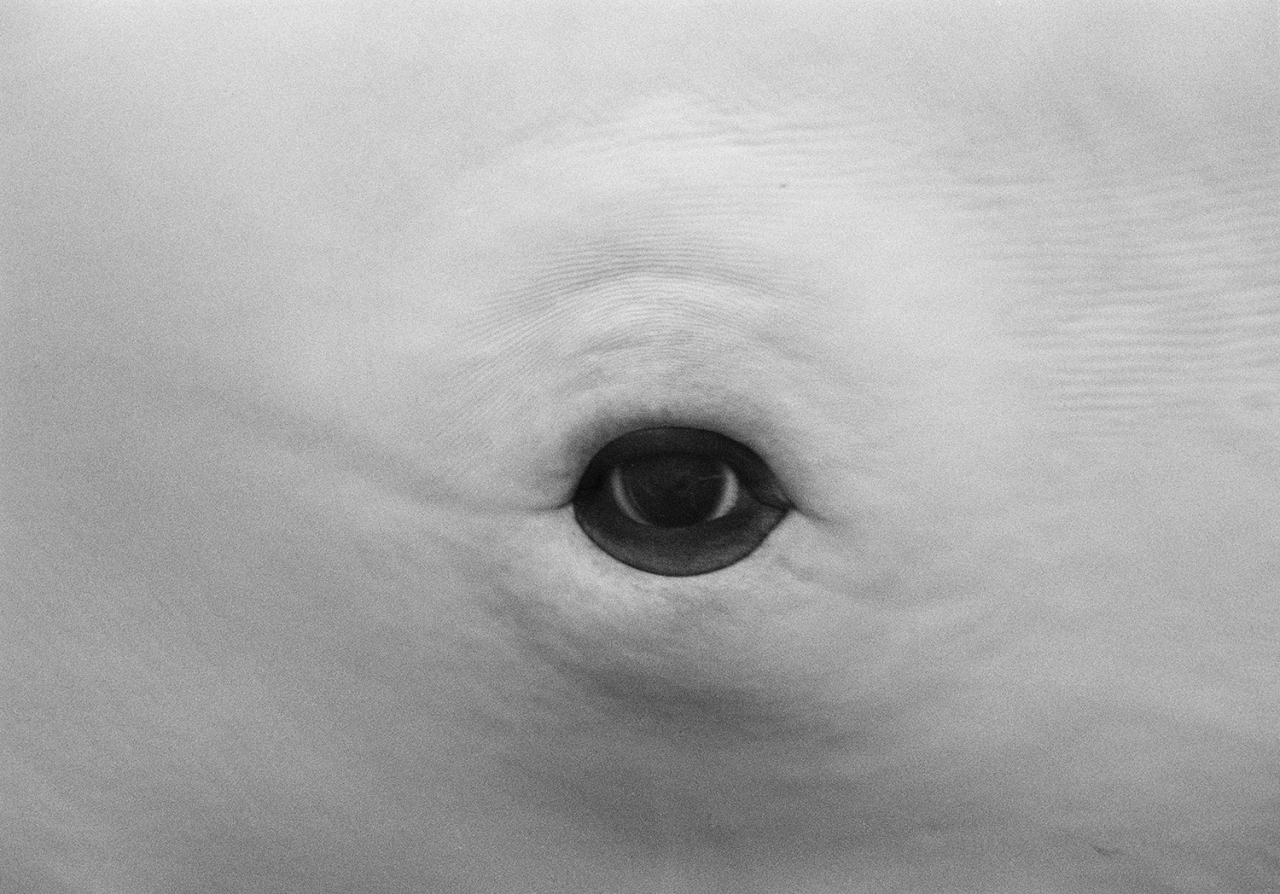Maryse Goudreau
Mélanger les bélugas
Au cours de sorties en bateau dans la baie d’Hudson effectuées lors d’un séjour de création à Churchill (Manitoba) en 2018, Maryse Goudreau a souvent entendu parler de l’intelligence sonore des bélugas. On lui a mentionné plusieurs fois que ces animaux savaient faire la différence entre les moteurs hors-bord Hyundai et Yamaha. Un des moteurs est plus souvent utilisé sur les chaloupes des Inuits, qui profitent de la grande migration de la population abondante de bélugas pour chasser au large de Churchill, tandis que l’autre moteur est principalement employé pour les zodiacs qui desservent les scientifiques et les touristes. Il semblerait que les bélugas soient peureux quand ils perçoivent les sons de moteur de l’un, et curieux quand ils entendent un moteur de l’autre. Inspirée par son séjour à Est-Nord-Est, lieu autogéré de recherche en art actuel situé à Saint-Jean-Port-Joli, ville renommée pour sa longue tradition de sculpture sur bois, Maryse Goudreau a réalisé un petit bateau doté de moteurs en bois, ceux-ci faisant écho à ses images d’étude du béluga à Churchill. Bien que tout le monde puisse faire de l’observation de bélugas en mer, les perceptions individuelles et les contributions scientifiques peuvent s’y mélanger ou s’opposer selon l’angle adopté.
Maryse Goudreau often heard, during the boat trips she took on Hudson Bay while taking part in a creative residency in Churchill (Manitoba) in 2018, about the sonic intelligence of belugas. She was told several times that these animals can tell the difference between Hyundai and Yamaha outboard motors; one of these engines is more frequently used on the Inuit’s boats, who take advantage of the great migration of abundant beluga populations to hunt off Churchill, while the other is mainly used on the zodiacs that ferry scientists and tourists. The belugas seem to react with shyness when they hear one engine, and curiosity when they hear the other. Inspired by her stay at Est-Nord-Est, an artist-run centre for research in contemporary art in Saint-Jean-Port-Joli, a town renowned for its long tradition of wood sculpture, Maryse Goudreau created a small vessel with wooden motors, echoing her images of studying beluga whales in Churchill. Although anyone can observe belugas at sea, individual perceptions and scientific contributions can mix or clash depending on the angle adopted.



Maryse Goudreau, 2015,2023,2016. Photo : courtoisie de l'artiste
Biographie
Maryse Goudreau vit à Escuminac, au Québec. Hybride, sa création traverse la photographie et l’essai vidéographique, la sculpture, des dispositifs immersifs, l’art action, l’art sonore ou encore le théâtre documentaire. Depuis 2012, elle crée une œuvre-archive dédiée au béluga sur laquelle elle envisage de travailler pendant 20 ans. Maryse Goudreau investit le champ de l’art à portée sociale et son intérêt pour l’anthropologie lui permet de réactiver des récits sous plusieurs formes. Elle a publié les livres Histoire sociale du béluga
(2016) et La conquête du béluga (2020). Elle est récipiendaire du prix Lynne-Cohen remis par le Musée national des beaux-arts du Québec (2017).
Maryse Goudreau lives in Escuminac, Québec. Her hybrid practice explores photography and video essays, sculpture, immersive environments, action art, sound art and documentary theatre. She has been working since 2012 on an archive dedicated to the beluga whale, on which she plans to work for 20 years. Goudreau is invested in socially conscious art-making, and her interest in anthropology allows her to reactivate narratives in different ways. She is the author of Histoire sociale du beluga (2016, “A social history of the beluga”) and La conquête du beluga (2020, “Conquering the beluga”). She is the recipient of the 2017 Lynne Cohen Prize awarded by the Musée national des beaux-arts du Québec.
